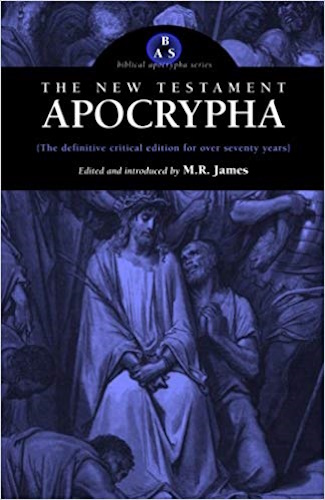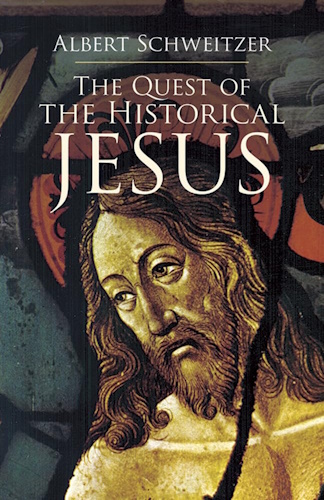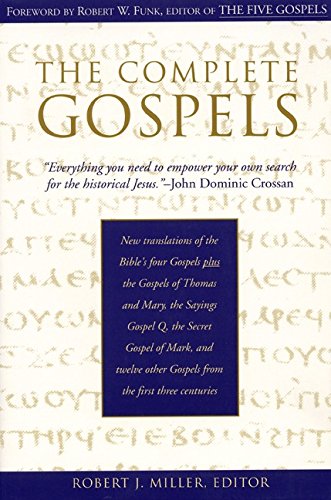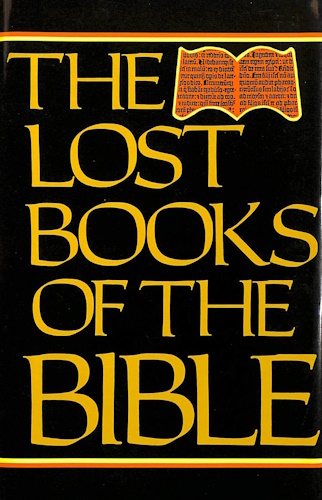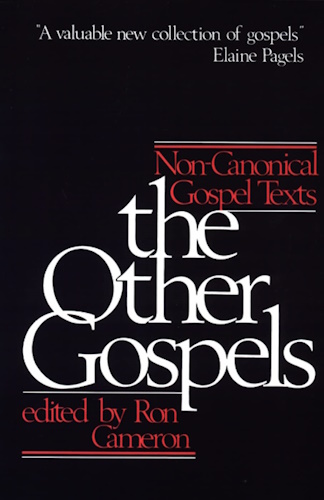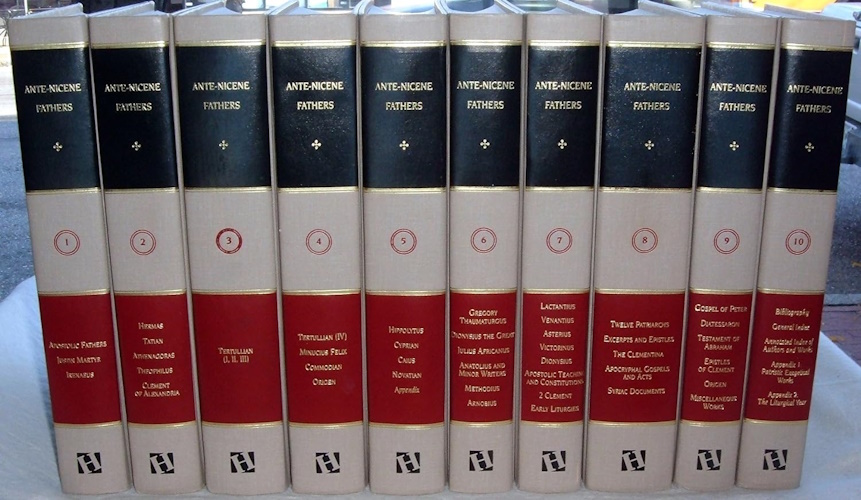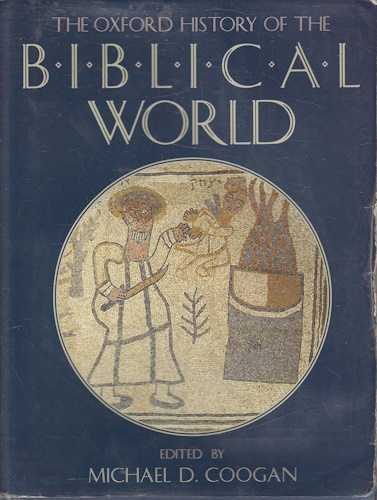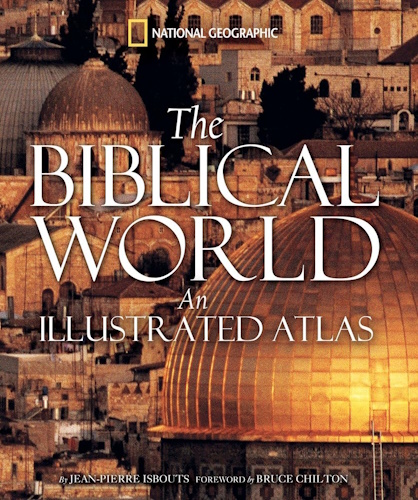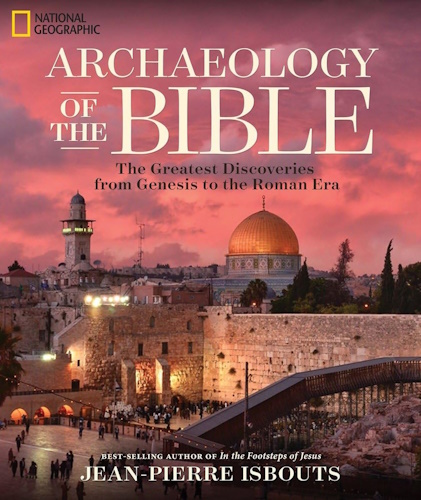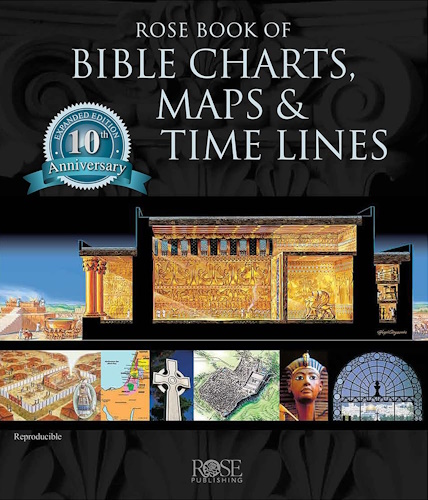
The Teaching of Addaeus the Apostle
THIS version of the legend of Veronica is written in very barbarous Latin, probably of the seventh or eighth century. An Anglo-Saxon version, which Tischendorf concludes to be derived from the Latin, was edited and translated for the Cambridge Antiquarian Society, by C. W. Goodwin, in 1851. The Anglo-Saxon text is from a MS. in the Cambridge Library, one of a number presented to the Cathedral of Exeter by Bishop Leofric in the beginning of the eleventh century.
The reader will observe that there are in this document two distinct legends, somewhat clumsily joined together--that of Nathan's embassy, and that of Veronica.
HERE BEGINNETH THE AVENGING OF THE SAVIOUR
IN the days of the Emperor Tiberius Caesar, when Herod was tetrarch, Christ was delivered under Pontius Pilate by the Jews, and revealed by Tiberius.
In those days Titus was a prince under Tiberius in the region of Equitania, in a city of Libia which is called Burgidalla. And Titus had a sore in his right nostril, on account of a cancer, and he bad his face torn even to the eye. There went forth a certain man from Judaea, by name Nathan the son of Nahum; for he was an Ishmaelite who went from land to land, and from sea to sea, and in all the ends of the earth. Now Nathan was sent from Judaea to the Emperor Tiberius, to carry their treaty to the city of Rome. And Tiberius was ill, and full of ulcers and fevers, and had nine kinds of leprosy. And Nathan wished to go to the city of Rome. But the north wind blew and hindered his sailing, and carried him down to the harbour of a city of Libia. Now Titus, seeing the ship coming, knew that it was from Judaea; and they all wondered, and said that they had never seen any vessel so coming from that quarter. And Titus ordered the captain to come to him, and asked him who he was. And he said: I am Nathan the son of Nahum, of the race of the Ishmaelites, and I am a subject of Pontius Pilate in Judaea. And I have been sent to go to Tiberius the Roman emperor, to carry a treaty from Judaea. And a strong wind came down upon the sea, and has brought me to a country that I do not know.
And Titus says: If thou couldst at any time find anything either of cosmetics or herbs which could cure the wound that I have in my face, as thou seest, so that I should become whole, and regain my former health, I should bestow upon thee many good things. And Nathan said to him: I do not know, nor have I ever known, of such things as thou speakest to me about. But for all that, if thou hadst been some time ago in Jerusalem, there thou wouldst have found a choice prophet, whose name was Emanuel, for He will save His people from their sins. And He, as His first miracle in Cana of Galilee, made wine from water; and by His word He cleansed lepers, He enlightened the eyes of one born blind, He healed paralytics, He made demons flee, He raised up three dead; a woman caught in adultery, and condemned by the Jews to be stoned, He set free; and another woman, mined Veronica, who suffered twelve years from an issue of blood, and came up to Him behind, and touched the fringe of His garment, He healed; and with five loaves and two fishes He satisfied five thousand men, to say nothing of little ones and women, and there remained of the fragments twelve baskets. All these things, and many others, were accomplished before His passion. After His resurrection we saw Him in the flesh as He had been before. And Titus said to Him: How did he rise again from the dead, seeing that he was dead? And Nathan answered and said: He was manifestly dead, and hung up on the cross, and again taken down from the cross, and for three days He lay in the tomb: thereafter He rose again from the dead, and went down to Hades, and freed the patriarchs and the prophets, and the whole human race; thereafter He appeared to His disciples, and ate with them; thereafter they saw Him going up into heaven. And so it is the truth, all this that I tell you. For I saw it with my own eyes, and all the house of Israel. And Titus said in his own words:
Woe to thee, O Emperor Tiberius, full of ulcers, and enveloped in leprosy, because such a scandal has been committed in thy kingdom; because thou hast made such laws in Judaea, in the land of the birth of our Lord Jesus Christ, and they have seized the King, and put to death the Ruler of the peoples; and they have not made Him come to us to cure thee of thy leprosy, and cleanse me from mine infirmity: on which account, if they had been before my face, with my own hands I should have slain the carcases of those Jews, and hung them up on the cruel tree, because they have destroyed my Lord, and mine eyes have not been worthy to see His face. And when he had thus spoken, immediately the wound fell from the face of Titus, and his flesh and his face were restored to health. And all the sick who were in the same place were made whole in that hour. And Titus cried out, and all the rest with him, in a loud voice, saying: My King and my God, because I have never seen Thee, and Thou hast made me whole, bid me go with the ship over the waters to the land of Thy birth, to take vengeance on Thine enemies; and help me, O Lord, that I may be able to destroy them, and avenge Thy death: do Thou, Lord, deliver them into my hand. And having thus spoken, he ordered that he should be baptized. And he called Nathan to him, and said to him: How hast thou seen those baptized who believe in Christ? Come to me, and baptize me in the name of the Father, and of the Son, and of the Holy Ghost. Amen. For I also firmly believe in the Lord Jesus Christ with all my heart, and with all my soul; because nowhere in the whole world is there another who has created me, and made me whole from my wounds.
And having thus spoken, he sent messengers to Vespasian to come with all haste with his bravest men, so prepared as if for war.
Then Vespasian brought with him five thousand armed men, and they went to meet Titus. And when they had come to the city of Libia, he said to Titus: Why is it that thou hast made me come hither? And he said: Know that Jesus has come into this world, and has been born in Judaea, in a place which is called Bethlehem, and has been given up by the Jews, and scourged, and crucified on Mount Calvary, and has risen again from the dead on the third day. And His disciples have seen Him in the same flesh in which he was born, and He has shown Himself to His disciples, and they have believed in Him. And we indeed wish to become His disciples.
Now, let us go and destroy His enemies from the earth, that they may now know that there is none like the Lord our God on the face of the earth.
With this design, then, they went forth from the city of Libia which is called Burgidalla, and went on board a ship, and proceeded to Jerusalem, and surrounded the kingdom of the Jews, and began to send them to destruction. And when the kings of the Jews heard of their doings, and the wasting of their land, fear came upon them, and they were in great perplexity. Then Archelaus was perplexed in his words, and said to his son:
My son, take my kingdom and judge it; and take counsel with the other kings who are in the land of Judah, that you may be able to escape from our enemies. And having thus said, he unsheathed his sword and leant upon it; and turned his sword, which was very sharp, and thrust it into his breast, and died. And his son allied himself with the other kings who were under him, and they took counsel among themselves, and went into Jerusalem with their chief men who were in their counsel, and stood in the same place seven years. And Titus and Vespasian took counsel to surround their city. And they did so. And the seven years being fulfilled, there was a very sore famine, and for want of bread they began to eat earth.
Then all the soldiers who were of the four kings took counsel among themselves, and said: Now we are sure to die: what will God do to us? or of what good is our life to us, because the Romans have come to take our place and nation? It is better for us to kill each other, than that the Romans should say that they have slain us, and gained the victory over us. And they drew their swords and smote themselves, and died, to the number of twelve thousand men of them. Then there was a great stench in that city from the corpses of those dead men. And their kings feared with a very great fear even unto death; and they could not bear the stench of them, nor bury them, nor throw them forth out of the city. And they said to each other: What shall we do? We indeed gave up Christ to death, and now we given up to death ourselves. Let us bow our heads, and give up the keys of the city to the Romans, because God has already given us up to death. And immediately they went up upon the walls of the city, and all cried out with a loud voice, saying: Titus and Vespasian, take the keys of the city, which have been given to you by Messiah, who is called Christ.
Then they gave themselves up into the hands of Titus and Vespasian, and said: Judge us, seeing that we ought to die, because we judged Christ; and he was given up without cause. Titus and Vespasian seized them, and some they stoned, and some they hanged on a tree, feet up and head down, and struck them through with lances; and others they gave up to be sold, and others they divided among themselves, and made four parts of them, just as they had done of the garments of the Lord. And they said: They sold Christ for thirty pieces of silver, and we shall sell thirty of them for one denarius. And so they did. And having done so, they seized all the lands of Judaea and Jerusalem.
Then they made a search about the face or portrait of Jesus, how they might find it. And they found a woman named Veronica who had it. Then they seized Pilate, and sent him to prison, to be guarded by four quaternions of soldiers at the door of the prison. Then they forthwith sent their messengers to Tiberius, the emperor of the city of Rome, that he should send Velosianus to them. And he said to him: Take all that is necessary for thee in the sea, and go down into Judaea, and seek out one of the disciples of him who is called Christ and Lord, that he may come to me, and in the name of his God cure me of the leprosy and the infirmities by which I am daily exceedingly burdened, and of my wounds, because I am ill at ease. And send upon the kings of the Jews, who are subject to my authority, thy forces and terrible engines, because they have put to death Jesus Christ our Lord, and condemn them to death. And if thou shalt there find a man as may be able to free me from this infirmity of mine, I will believe in Christ the Son of God, and will baptize myself in his name. And Velosianus said: My lord emperor, if I find such a man as may be able to help and free us, what reward shall I promise him? Tiberius said to him: The half of my kingdom, without fail, to be in his hand.
Then Velosianus immediately went forth, and went on board the ship, and hoisted the sail in the vessel, and went on sailing through the sea. And he sailed a year and seven days, after which he arrived at Jerusalem. And immediately he ordered some of the Jews to come to his power, and began carefully to ask what had been the acts of Christ. Then Joseph, of the city of Arimathaea, and Nicodemus, came at the same time. And Nicodemus said: I saw Him, and I know indeed that He is the Saviour of the world. And Joseph said to him: And I took Him down from the cross, and laid Him in a new tomb, which had been cut out of the rock. And the Jews kept me shut up on the day of the preparation, at evening; and while I was standing in prayer on the Sabbath-day, the house was hung up by the four corners, and I saw the Lord Jesus Christ like a gleam of light, and for fear I fell to the ground. And He said to me, Look upon me, for I am Jesus, whose body thou buriedst in thy tomb. And I said to Him, Show me the sepulchre where I laid Thee. And Jesus, holding my hand in His right hand, led me to the place where I buried Him.
And there came also the woman named Veronica, and said to him: And I touched in the crowd the fringe of His garment, because for twelve years I had suffered from an issue of blood; and He immediately healed me. Then Velosianus said to Pilate: Thou, Pilate, impious and cruel, why hast thou slain the Son of God? And Pilate answered: His own nation, and the chief priests Annas and Caiaphas, gave him to me. Volosianus said: Impious and cruel, thou art worthy of death and cruel punishment. And he sent him back to prison. And Velosianus at last sought for the face or the countenance of the Lord. And all who were in that same place said: It is the woman called Veronica who has the portrait of the Lord in her house. And immediately he ordered her to be brought before his power. And he said to her: Hast thou the portrait of the Lord in thy house? But she said, No. Then Velosianus ordered her to be put to the torture, until she should give up the portrait of the Lord. And she was forced to say: I have it in clean linen, my lord, and I daily adore it. Velosianus said: Show it to me. Then she showed the portrait of the Lord.
When Velosianus saw it, he prostrated himself on the ground; and with a ready heart and true faith he took hold of it, and wrapped it in cloth of gold, and placed it in a casket, and sealed it with his ring. And he swore with an oath, and said: As the Lord God liveth, and by the health of Caesar, no man shall any more see it upon the face of the earth, until I see the face of my lord Tiberius. And when he had thus spoken, the princes, who were the chief men of Judaea, seized Pilate to take him to a seaport. And he took the portrait of the Lord, with all His disciples, and all in his pay, and they went on board the ship the same day. Then the woman Veronica, for the love of Christ, left all that she possessed, and followed Velosianus. And Velosianus said to her: What dost thou wish, woman, or what dost thou seek? And she answered: I am seeking the portrait of our Lord Jesus Christ, who enlightened me, not for my own merits, but through His own holy affection. (1) Give back to me the portrait of my Lord Jesus Christ; for because of this I die with a righteous longing. But if thou do not give it back to me, I will not leave it until I see where thou wilt put it, because I, most miserable woman that I am, will serve Him all the days of my life; because I believe that He, my Redeemer, liveth for everlasting.
Then Velosianus ordered the woman Veronica to be taken down with him into the ship And the sails being hoisted. they began to go in the vessel in the name of the Lord, and they sailed through the sea. But Titus, along with Vespasian, went up into Judaea, avenging all nations upon their land. (2) At the end of a year Velosianus came to the city of Rome, brought his vessel into the river which is called Tiberis, or Tiber, and entered the city which is called Rome. And he sent his messenger to his lord Tiberius the emperor in the Lateran about his prosperous arrival.
Then Tiberius the emperor, when he heard the message of Velosianus, rejoiced greatly, and ordered him to come before his face. And when he had come, he called him, saying: Velosianus, how hast thou come, and what hast thou seen in the region of Judaea of Christ the Lord and his disciples? Tell me, I beseech thee, that he is going to cure me of mine infirmity, that I may be at once cleansed from that leprosy which I have over my body, and I give up my whole kingdom into thy power and his.
And Velosianus said: My lord emperor, I found thy servants Titus and Vespasian in Judaea fearing the Lord, and they were cleansed from all their ulcers and sufferings. And I found that all the kings and rulers of Judaea have been hanged by Titus; Annas and Caiaphas have been stoned, Archelaus has killed himself with his own lance; and I have sent Pilate to Damascus in bonds, and kept him in prison under safe keeping. But I have also found out about Jesus, whom the Jews most wickedly attacked with swords, and staves, and weapons; and they crucified him who ought to have freed and enlightened us, and to have come to us, and they hanged him on a tree. And Joseph came from Arimathaea, and Nicodemus with him, bringing a mixture of myrrh and aloes, about a hundred pounds, to anoint the body of Jesus; and they took him down from the cross, and laid him in a new tomb. And on the third day he most assuredly rose again froth the dead, and showed himself to his disciples in the same flesh in which he had been born.
At length, after forty days, they saw him going up into heaven. Many, indeed, and other miracles did Jesus before his passion and after. First, of water he made wine; he raised the dead, he cleansed lepers, he enlightened the blind, he cured paralytics, he put demons to flight; he made the deaf hear, the dumb speak; Lazarus, when four days dead, he raised from the tomb; the woman Veronica, who suffered from an issue of blood twelve years, and touched the fringe of his garment, he made whole. Then it pleased the Lord in the heavens, that the Son of God, who, sent into this world as the first-created, had died upon earth, should send his angel; and he commanded Titus and Vespasian, whom I knew in that place where thy throne is. And it pleased God Almighty that they went into Judaea and Jerusalem, and seized thy subjects, and put them under that sentence, as it were, in the same manner as they did when thy subjects seized Jesus and bound him.
And Vespasian afterwards said: What shall we do about those who shall remain? Titus answered: They hanged our Lord on a green tree, and struck him with a lance; now let us hang them on a dry tree, and pierce their bodies through and through with the lance. And they did so. And Vespasian said: What about those who are left?
Titus answered: They seized the tunic of our Lord Jesus Christ, and of it made four parts; now let us seize them, and divide them into four parts,--to thee one, to me one, to thy men another, and to my servants the fourth part. And they did so. And Vespasian said: But what shall we do about those who are left? Titus answered him: The Jews sold our Lord for thirty pieces of silver: now let us sell thirty of them for one piece of silver. And they did so. And they seized Pilate, and gave him up to me, and I put him in prison, to be guarded by four quaternions of soldiers in Damascus. Then they made a search with great diligence to seek the portrait of the Lord; and they found a woman named Veronica who had the portrait of the Lord. Then the Emperor Tiberius said to Velosianus: How hast thou it? And he answered: I have it in clean cloth of gold, rolled up in a shawl. And the Emperor Tiberius said: Bring it to me, and spread it before my face, that I, falling to the ground and bending my knees, may adore it on the ground. Then Velosianus spread out his shawl with the cloth of gold on which the portrait of the Lord had been imprinted; and the Emperor Tiberius saw it.
And he immediately adored the image of the Lord with a pure heart, and his flesh was cleansed as the flesh of a little child. And all the blind, the lepers, the lame, the dumb, the deaf, and those possessed by various diseases, who were there present, were healed, and cured, and cleansed. And the Emperor Tiberius bowed his head and bent his knees, considering that saying: Blessed is the womb which bore Thee, and the breasts which Thou hast sucked; and he groaned to the Lord, saying with tears:
God of heaven and earth, do not permit me to sin, but confirm my soul and my body, and place me in Thy kingdom, because in Thy name do I trust always: free me from all evils, as Thou didst free the three children from the furnace of blazing fire.
Then said the Emperor Tiberius to Velosianus: Velosianus, hast thou seen any of those men who saw Christ? Velosianus answered: I have. He said: Didst thou ask how they baptize those who believed in Christ? Velosianus said: Here, my Lord, we have one of the disciples of Christ himself. Then he ordered Nathan to be summoned to come to him. Nathan therefore came and baptized him in the name of the Father, and of the Son, and of the Holy Ghost. Amen. Immediately the Emperor Tiberius, made whole from all his diseases, ascended upon his throne, and said: Blessed art Thou, O Lord God Almighty, and worthy to be praised, who hast freed me from the snare of death, and cleansed me from all mine iniquities; because I have greatly sinned before Thee, O Lord my God, and I am not worthy to see Thy face. And then the Emperor Tiberius was instructed in all the articles of the faith, fully, and with strong faith.
May that same God Almighty, who is King of kings and Lord of lords, Himself shield us in His faith, and defend us, and deliver us from all danger and evil, and deign to bring us to life everlasting, when this life, which is temporary, shall fail; who is blessed for ever and ever. Amen.
![]()
![]()
-
Urantia Book, 44:0.11 - The Celestial Artisans
Never in your long ascendancy will you lose the power to recognize your associates of former existences. Always, as you ascend inward in the scale of life, will you retain the ability to recognize and fraternize with the fellow beings of your previous and lower levels of experience. Each new translation or resurrection will add one more group of spirit beings to your vision range without in the least depriving you of the ability to recognize your friends and fellows of former estates.
-
Princess Bride 1987 Wallace Shawn (Vizzini) and Mandy Patinkin (Inigo Montoya)
Vizzini: HE DIDN'T FALL? INCONCEIVABLE.
Inigo Montoya: You keep using that word. I do not think it means what you think it means. -
Urantia Book, 117:4.14 - The Finite God
And here is mystery: The more closely man approaches God through love, the greater the reality -- actuality -- of that man. The more man withdraws from God, the more nearly he approaches nonreality -- cessation of existence. When man consecrates his will to the doing of the Father's will, when man gives God all that he has, then does God make that man more than he is.
-
Urantia Book, 167:7.4 - The Talk About Angels
"And do you not remember that I said to you once before that, if you had your spiritual eyes anointed, you would then see the heavens opened and behold the angels of God ascending and descending? It is by the ministry of the angels that one world may be kept in touch with other worlds, for have I not repeatedly told you that I have other sheep not of this fold?"
-
Urantia Book, Foreword - 0:12.12 - The Trinities
But we know that there dwells within the human mind a fragment of God, and that there sojourns with the human soul the Spirit of Truth; and we further know that these spirit forces conspire to enable material man to grasp the reality of spiritual values and to comprehend the philosophy of universe meanings. But even more certainly we know that these spirits of the Divine Presence are able to assist man in the spiritual appropriation of all truth contributory to the enhancement of the ever-progressing reality of personal religious experience—God-consciousness.
-
Urantia Book, 1:4.3 - The Mystery Of God
When you are through down here, when your course has been run in temporary form on earth, when your trial trip in the flesh is finished, when the dust that composes the mortal tabernacle "returns to the earth whence it came"; then, it is revealed, the indwelling "Spirit shall return to God who gave it." There sojourns within each moral being of this planet a fragment of God, a part and parcel of divinity. It is not yet yours by right of possession, but it is designedly intended to be one with you if you survive the mortal existence.
-
Urantia Book, 1:4.1 - The Mystery Of God
And the greatest of all the unfathomable mysteries of God is the phenomenon of the divine indwelling of mortal minds. The manner in which the Universal Father sojourns with the creatures of time is the most profound of all universe mysteries; the divine presence in the mind of man is the mystery of mysteries.
-
Urantia Book, 1:4.6 - The Mystery Of God
To every spirit being and to every mortal creature in every sphere and on every world of the universe of universes, the Universal Father reveals all of his gracious and divine self that can be discerned or comprehended by such spirit beings and by such mortal creatures. God is no respecter of persons, either spiritual or material. The divine presence which any child of the universe enjoys at any given moment is limited only by the capacity of such a creature to receive and to discern the spirit actualities of the supermaterial world.
-
Urantia Book, 11:0.1 - The Eternal Isle Of Paradise
Paradise is the eternal center of the universe of universes and the abiding place of the Universal Father, the Eternal Son, the Infinite Spirit, and their divine co-ordinates and associates. This central Isle is the most gigantic organized body of cosmic reality in all the master universe. Paradise is a material sphere as well as a spiritual abode. All of the intelligent creation of the Universal Father is domiciled on material abodes; hence must the absolute controlling center also be material, literal. And again it should be reiterated that spirit things and spiritual beings are real.
-
Urantia Book, 50:6.4 - Planetary Culture
Culture presupposes quality of mind; culture cannot be enhanced unless mind is elevated. Superior intellect will seek a noble culture and find some way to attain such a goal. Inferior minds will spurn the highest culture even when presented to them ready-made.
-
Urantia Book, 54:1.6 - True And False Liberty
True liberty is the associate of genuine self-respect; false liberty is the consort of self-admiration. True liberty is the fruit of self-control; false liberty, the assumption of self-assertion. Self-control leads to altruistic service; self-admiration tends towards the exploitation of others for the selfish aggrandizement of such a mistaken individual as is willing to sacrifice righteous attainment for the sake of possessing unjust power over his fellow beings.
-
Urantia Book, 54:1.9 - True And False Liberty
How dare the self-willed creature encroach upon the rights of his fellows in the name of personal liberty when the Supreme Rulers of the universe stand back in merciful respect for these prerogatives of will and potentials of personality! No being, in the exercise of his supposed personal liberty, has a right to deprive any other being of those privileges of existence conferred by the Creators and duly respected by all their loyal associates, subordinates, and subjects.
-
Urantia Book, 54:1.8 - True And False Liberty
There is no error greater than that species of self-deception which leads intelligent beings to crave the exercise of power over other beings for the purpose of depriving these persons of their natural liberties. The golden rule of human fairness cries out against all such fraud, unfairness, selfishness, and unrighteousness.
